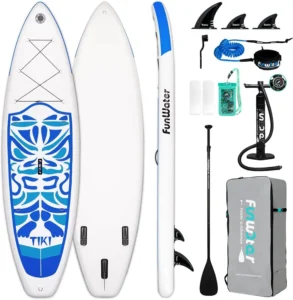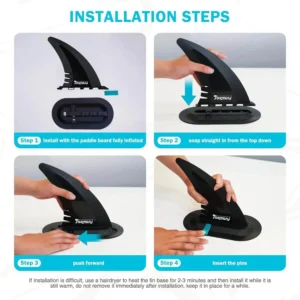How To Paddle Boarding (SUP)
How To Paddle Boarding you don’t know? Today’s your lucky day because you will learn all tips of paddle boarding. Paddle boarding is a fantastic water activity that combines balance, strength, and a connection with nature. If you’re a beginner looking to get started, here’s a step-by-step guide on how to paddleboard. The journey of paddleboarding as a beginner is an exciting endeavour that opens doors to water exploration and adventure. Here’s a guide to help you learn the basics and set you on the path to becoming a confident paddleboarder:
Paddle boarding draws inspiration from surfing, yet it diverges in approach. Unlike surfers who wait for waves while seated on the board, paddleboarders have the freedom to propel themselves forward at their own pace, thanks to the assistance of their reliable paddles.

$199.9
Related Paddle For Boarding
PADDLE BOARDING DIFFICULTY
If you catch on quickly, you can grasp the fundamentals of stand-up paddleboarding (SUP) within just a day or two. While more advanced forms of SUP, such as SUP surfing and long-distance touring, present greater challenges, getting the hang of everyday recreational paddling is something you can easily pick up in no time.
Beginner-Friendly
- For those new to paddle boarding, the learning curve is relatively gentle. Beginner-friendly boards are designed for stability, making it easier to find balance and navigate calm waters. Most beginners can stand up and paddle within their first session.
Stability and Balance
- The primary challenge for beginners lies in finding their balance on the board. Paddleboards are wider and more stable than surfboards, providing a solid platform. As individuals gain confidence and experience, balancing becomes second nature.
Water Conditions
- Difficulty can be influenced by water conditions. Paddleboarding on calm lakes or slow rivers is generally easier than tackling ocean waves or swift currents. Beginners often start in calm waters to build skills before progressing to more challenging conditions.
Core Strength
- Paddleboarding engages core muscles for stability and control. While it doesn’t require intense physical fitness, developing core strength can enhance the overall experience and make it easier to handle different conditions.
Learning Turns and Manoeuvres
- Manoeuvring the paddleboard, especially turning, may pose a slight challenge for beginners. Learning proper turning techniques with the paddle and shifting body weight becomes more intuitive with practice.
Advanced Paddle boarding
- As individuals progress, they may explore advanced paddleboarding activities such as surfing waves, participating in races, or practicing yoga on the board. These activities introduce additional challenges that require more skill and experience.
Professional Instruction
- Taking a lesson from a certified instructor can significantly reduce the perceived difficulty for beginners. Professional guidance ensures proper technique, safety awareness, and a smoother learning process.
About this item
- 【New ultra light construction dual layer PVC 】35% lighter than comparable models. Inflated 10’6″ long 33″ wide 6″ thick, weight 17.6 lbs, maximum capacity is up to 330 lbs, stable and great for all skill levels and conditions.
- 【Ultra durable】Constructed with additional PVC layer of board rails are highly strengthened the board durability.
- 【Safety & Convenience】 33” board width and 3 removable fins construction achieved amazing balance ability.
- 【Package including 】 Board, adjustable aluminum paddle, high pressure pump, travel backpack, coil leash,waterproof bag, and 3 removable fins.
- 【Warranty】No risk returns within 30 days+ 60 day guarantee +1 year manufacturer warranty.
Technical Detail and installation of boarding paddles
| SIZE | 10’6×33″×6″ |
| WEIGHT CAPACITY | 330LBS |
| WEIGHT | 12.5 KG |
| PECILIARITY | Cuspidal design fast speed |
